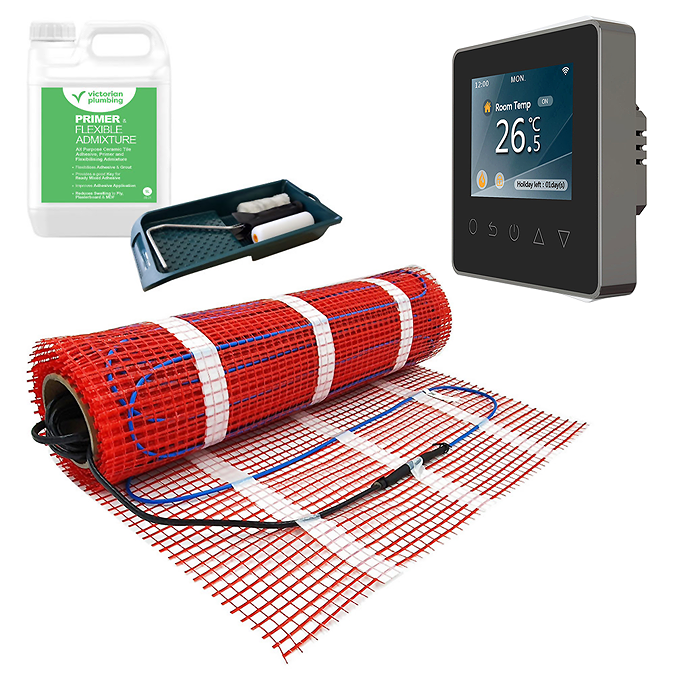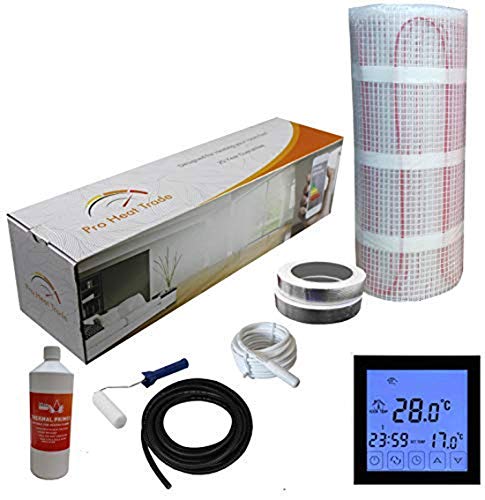Is underfloor heating the best choice for heating a kitchen? We look at the options
Heating a kitchen may seem straightforward but there are a lot of options to choose from. Here we guide through the options to help you make the right choice
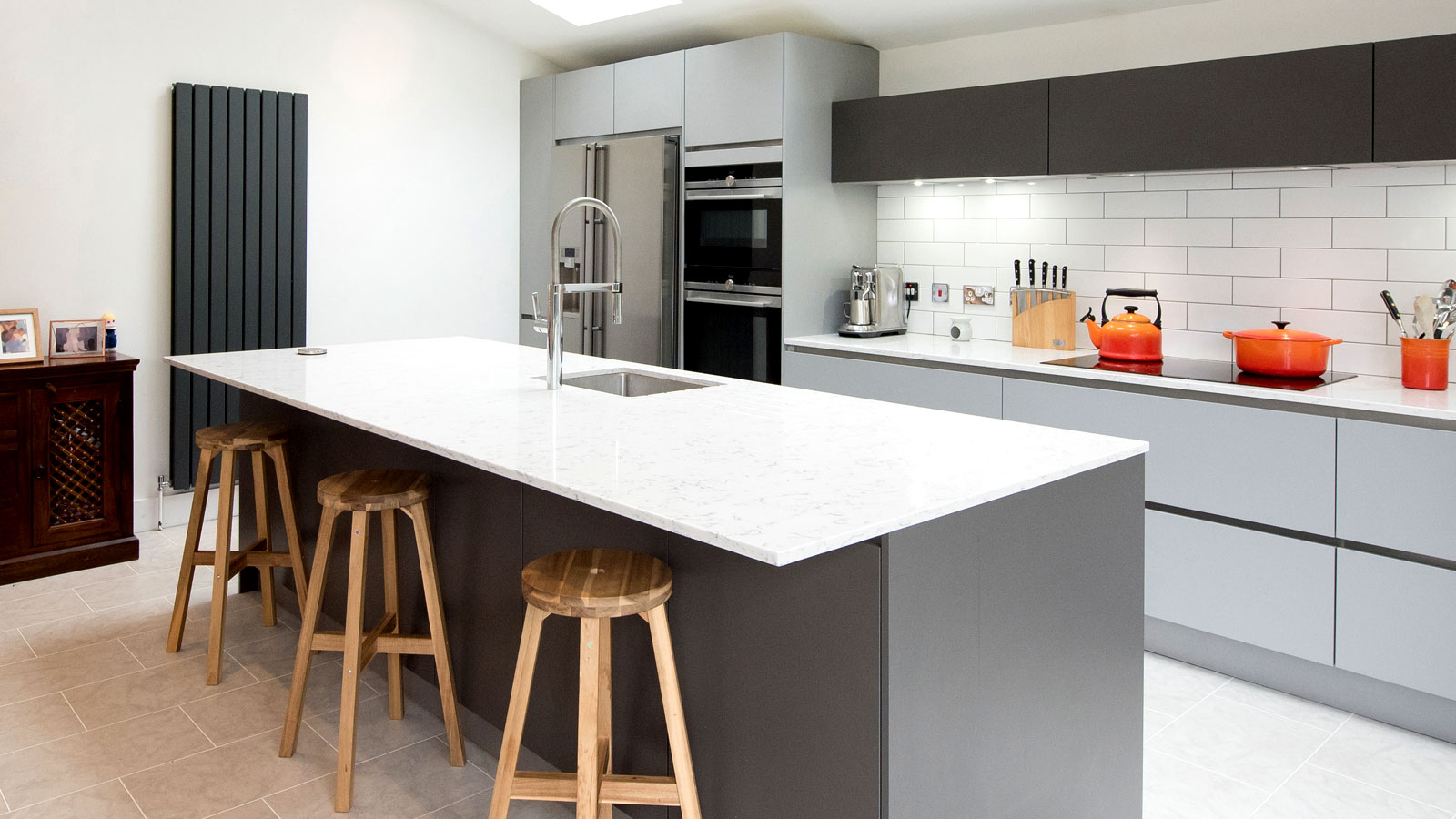
When designing a new kitchen, often forgotten are heating a kitchen considerations. You’ll probably be dreaming of cabinets, colours and configuration. But, getting heating considerations right is just as important as any other part of the design process.
Get it wrong and you could end up with a lack of wall space for wall-mounted heating systems or floor space for underfloor heating. You could be introducing cold spots that will be unwelcome, especially in larger open plan spaces.
So you need to think carefully about what heating you’ll need when designing a kitchen. Here we run through the options with some smart expert insight.

Working in the industry for over 15 years Gordon and Alan's mission is to help property owners get warmer and more comfortable with underfloor heating and proper floor screed.
Installing underfloor heating in a kitchen
Underfloor heating (UFH) is not only a popular choice for heating a kitchen, it's probably the best choice too when it works for your project. And it brings with it plenty of advantages as Gordon Chalk and Alan Houghton of Next Level Underfloor Heating and Screed Solutions reveal.
- Even heat distribution Unlike radiators, which cause hot spots, UFH provides continuous warmth across the floor, making the kitchen pleasant even on frigid mornings.
- Space saver Cabinets and appliances sometimes take up valuable wall space in kitchens. UFH removes the need for huge radiators, offering you additional design options.
- Energy efficient UFH runs at lower temperatures than standard radiators, making it more energy efficient. This is particularly useful in kitchens, where appliances may provide extra warmth.
- Comfort underfoot Walking over heated tiles or hard floors, particularly in the winter, provides a nice touch.
- Hygiene and safety Compared to radiators, UFH minimises dust circulation, which is advantageous in kitchens. It also reduces the danger of burns or injury from hot surfaces or projecting edges.
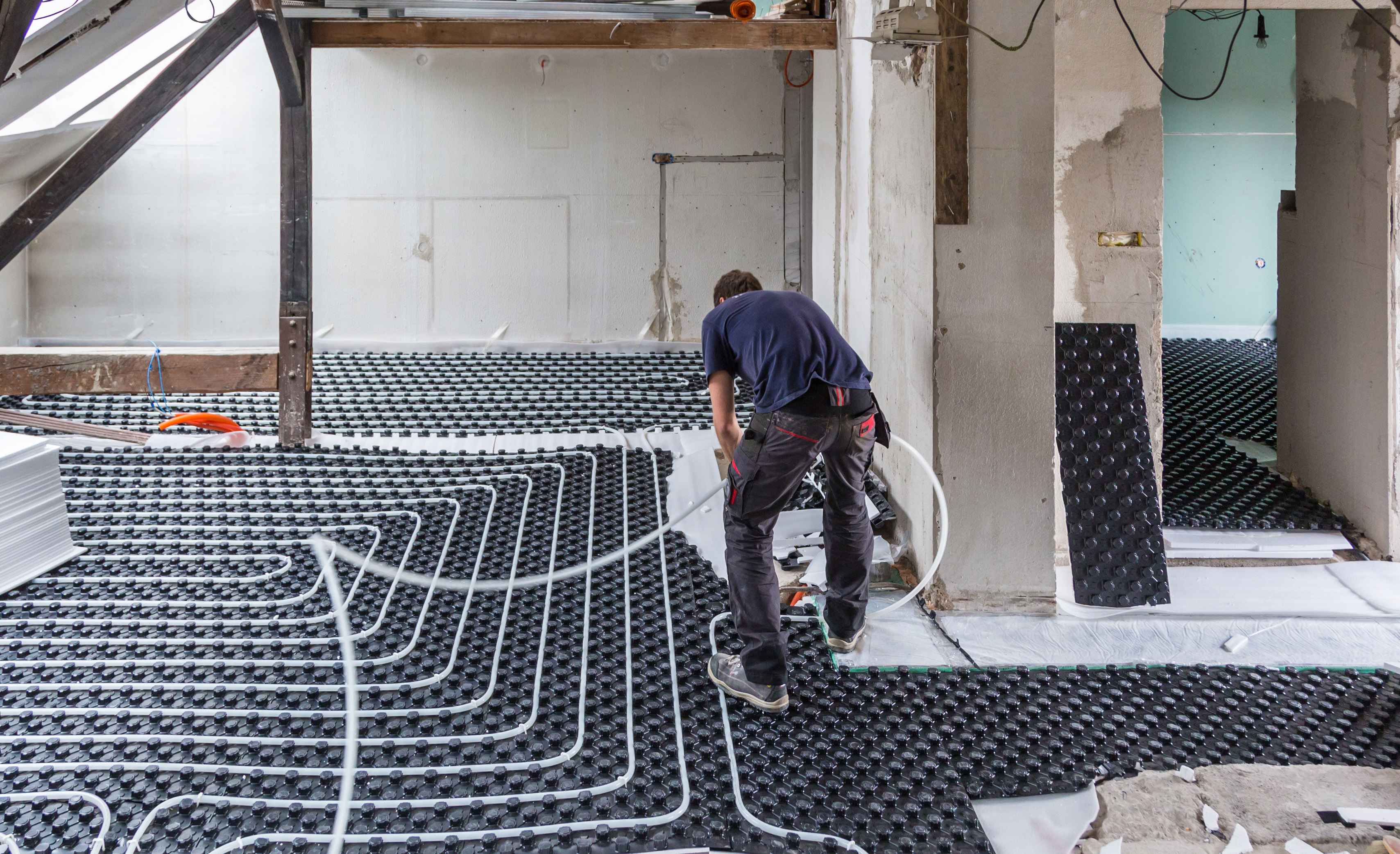
But before you go ahead and install UFH you’ll need to choose between a wet system (connected to your home's central heating) and electric underfloor heating. Wet systems are often the preferred choice, but Chalk and Houghton delve into the differences and suggest which is best for what.
"Wet UFH is best suited for larger kitchens, or extensive renovations that allow you to connect the system into the flooring,” explains Chalk and Houghton. They add, “When used in conjunction with a boiler or heat pump, it is very energy efficient. And, it has lower long-term operating expenses.”
You would also need to consider the following says Chalk and Houghton, “Installation expenses are higher, and a suitable subfloor depth is required. Also, installation is more time-consuming.”
The alternative to wet UFH is an electrical UFH system, which Chalk and Houghton say, “Is ideal for smaller kitchens or retrofits, particularly if height buildup is an issue.” They add, “Installation is easier and quicker, with less disturbance and thin mats are ideal for kitchens with a restricted floor depth.” Plus, they are, “Ideal for areas where you do not need to heat the whole home.”
But Chalk and Houghton say to note these considerations, “Running expenses are higher as compared to wet systems and long-term heating of bigger rooms may be less efficient.”
Try these underfloor heating solutions
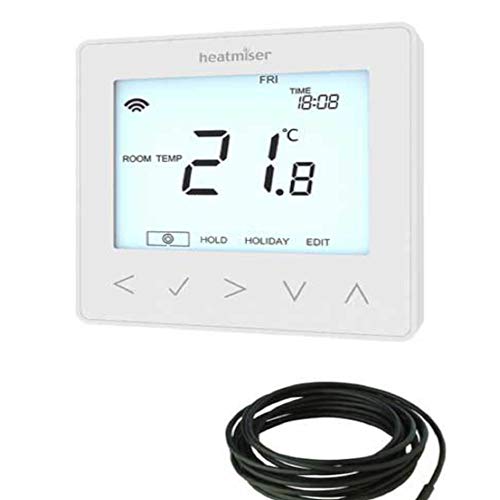
With an intuitive UI on device and mobile app, quickly customise temperatures to suit. Compatible with electric UFH system and home automation such as Alexa.
Choosing radiators to heat a kitchen
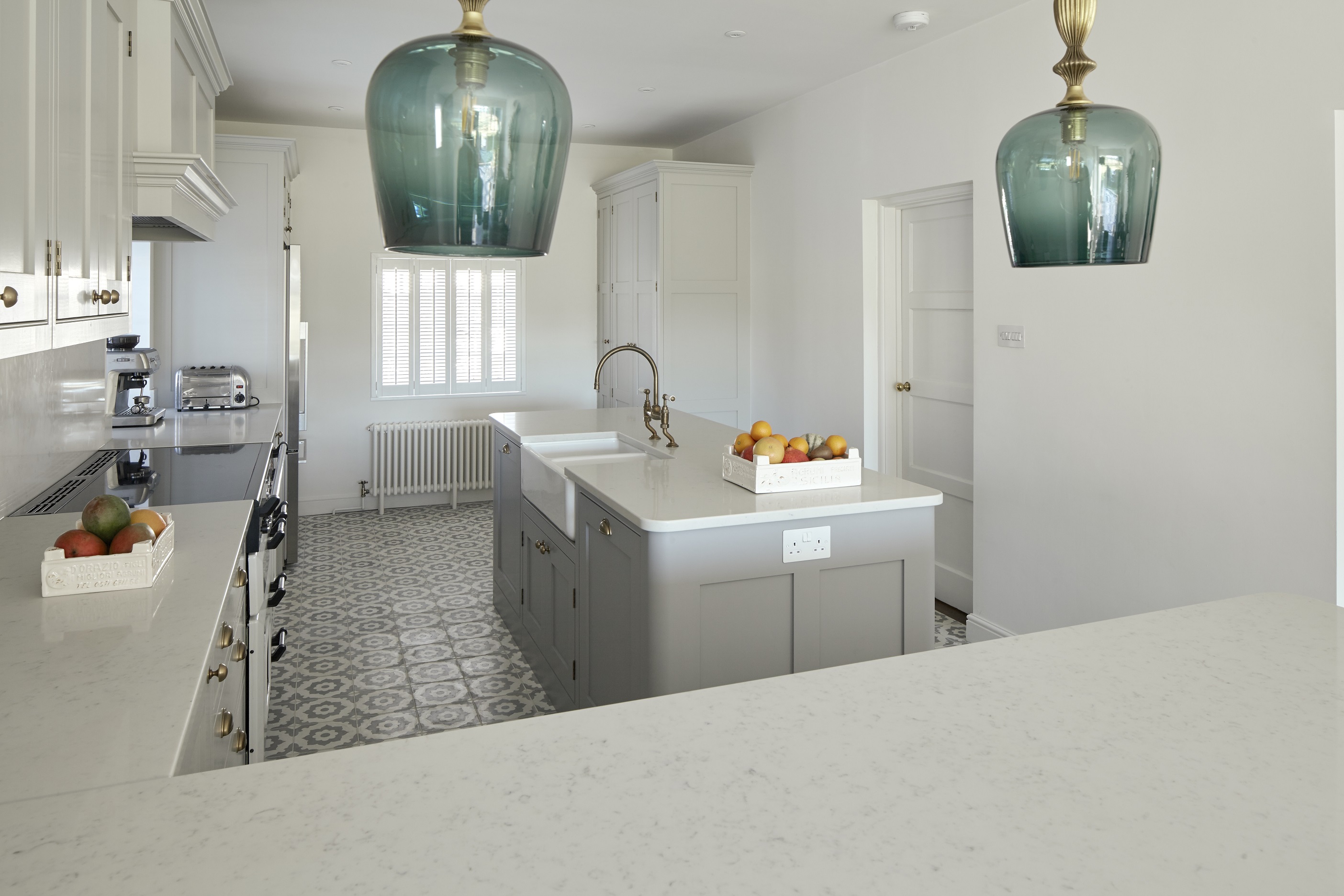
If you're working on a kitchen renovation of an existing space, then you might have a radiator system as your main heating source in a kitchen.
Radiators are effective at space heating as they're quick to respond and can heat a room within 20-30 minutes. Radiators are also far better looking these days, with a range of designer radiator ideas available to suit any type of property or kitchen scheme.
Even the best designer radiators, while looking great, can't offer the same even distribution as UFH, as the heat will always emanate from where the radiator is located, meaning one side of the room will heat up quicker. In a large, open plan space, this can certainly lead to cold spots, especially if you don't have sufficient radiators (or specify radiators with sufficient BTUs) across the whole space.
Radiators also take up valuable space. Wall space is at a premium in kitchens, though vertical style radiators offer better space use than horizontal ones in these spaces, but it also may affect your floorplan and what furniture you locate where in the space. Radiators also collect dust and require regular cleaning.
Plinth heating for a kitchen
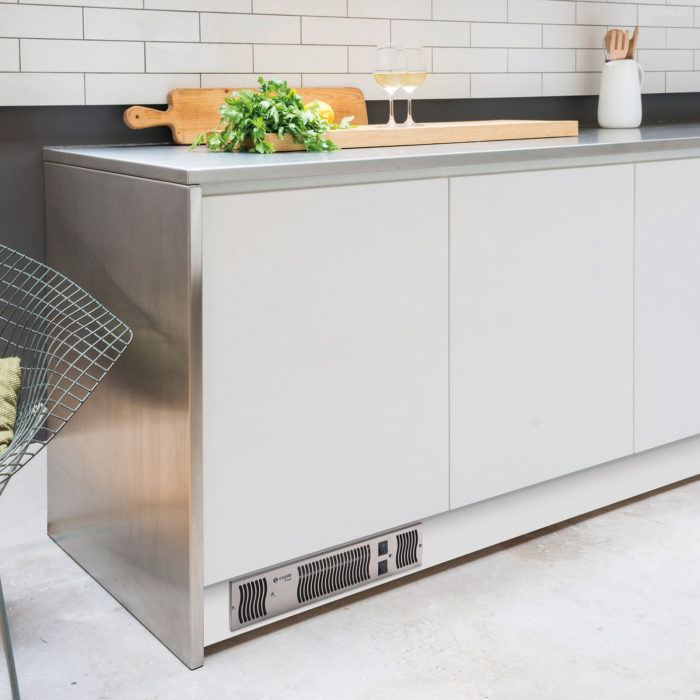
Plinth heaters are small heating systems that make use of the plinths in a kitchen, utilising a space that would otherwise be wasted. Much like underfloor heating, plinth heaters come in two types:
- Hydronic plinth heaters, which are connected to your central heating
- Electric plinth heaters
The pros and the cons for each type closely match those of UFH, with central heating connected heaters being less expensive to run than electric ones, however plinth heaters are an effective use of space and are relatively cheap and easy to specify and install.
Hydronic heaters will have a higher output than electric ones, but both will likely need some support in heating a larger kitchen, and may operate better as a supplementary heat system to round out your kitchen's space heating requirement and reduce cold spots.
It's worth noting that these heaters will create a quiet blowing sound when in use.
Discreet kitchen skirting heating
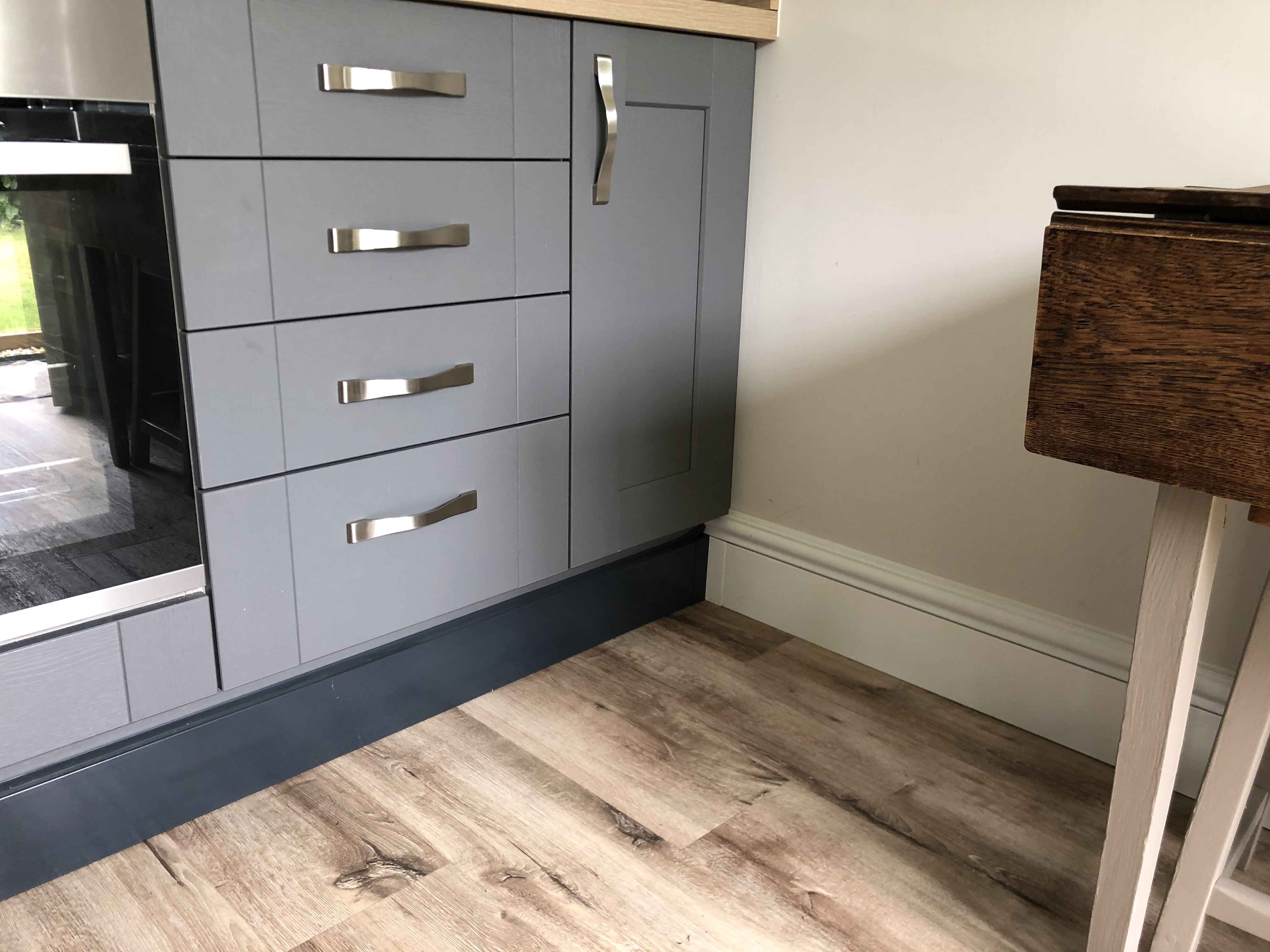
Skirting heating is another option for adding a discreet heating system to your kitchen. This system typically sees a heating system incorporated into a skirting board design which can be run along the length of a room, but skirting heating can also be provided in a ‘plinth’ version to be installed at the base of kitchen units, or fitted wardrobes for example.
"Skirting heating is available in a ‘wet’ version for use with boilers and heat pumps, or in an all-electric version, and the heated plinth can be colour matched to suit the décor of the kitchen," explains Martin Wadsworth from Discrete Heat.
"They produce an infra-red radiant heat, and often are sufficient to heat the whole kitchen space as they can be provided in any length up to 6m."
Skirting heating is especially useful when wall space is at a premium and leaving space for a radiator might compromise the kitchen design.
Although they don’t heat the floor from underneath like underfloor heating, they do distribute the heat over a wider area than a traditional kick space heater or radiator as they can span the length of the room.
Heat-storage range cookers
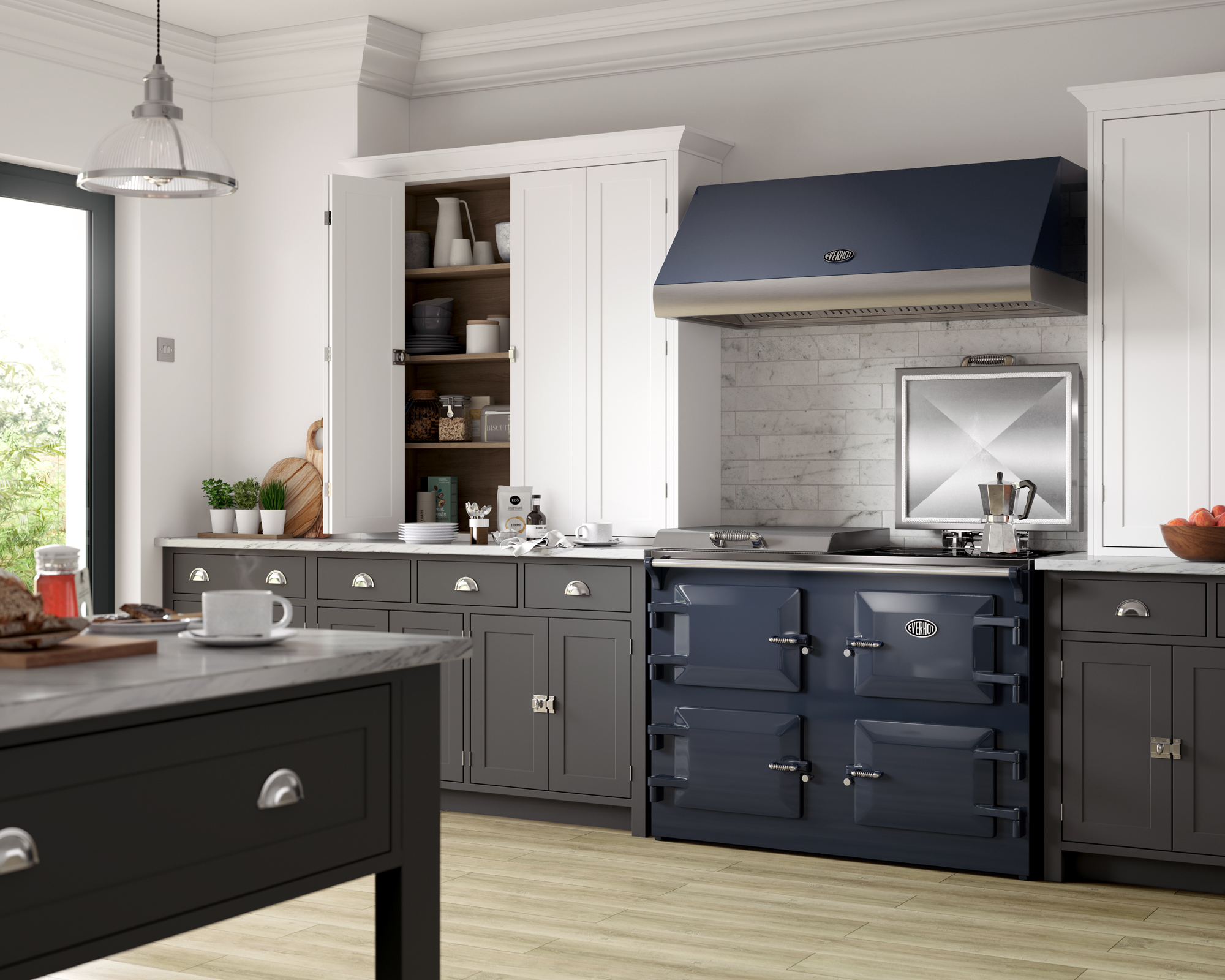
Heat-storage range cookers are designed to offer space heating and cooking all in one, however, with a vast range of makes and models available today, you'll need to do your research as to what yours offer. There are range cookers that are just designed for cooking while, on the other end of the spectrum, heat-storage range cookers available that can provide hot water and heat your whole house.
Once upon a time, living with a traditional heat-storage range cooker such as an AGA was a lifestyle choice. These 'always on' ranges provided space heating, but during the summer months, this could cause the kitchen to overheat. Today's heat-storage ranges run on a variety of fuels, from electricity and gas to LPG, oil and solid fuels. They also come with more sophisticated controls, allowing independent control over the heating, hot water and and cooking functions, both manually and automatically on a timer.
However, heat-storage ranges do still take some getting used to as an alternative way to heat your space and to cook with. These use radiant heat for both the oven and hobs, which can take some trial and error compared to more commonly found appliances.
Installing a stove in a kitchen
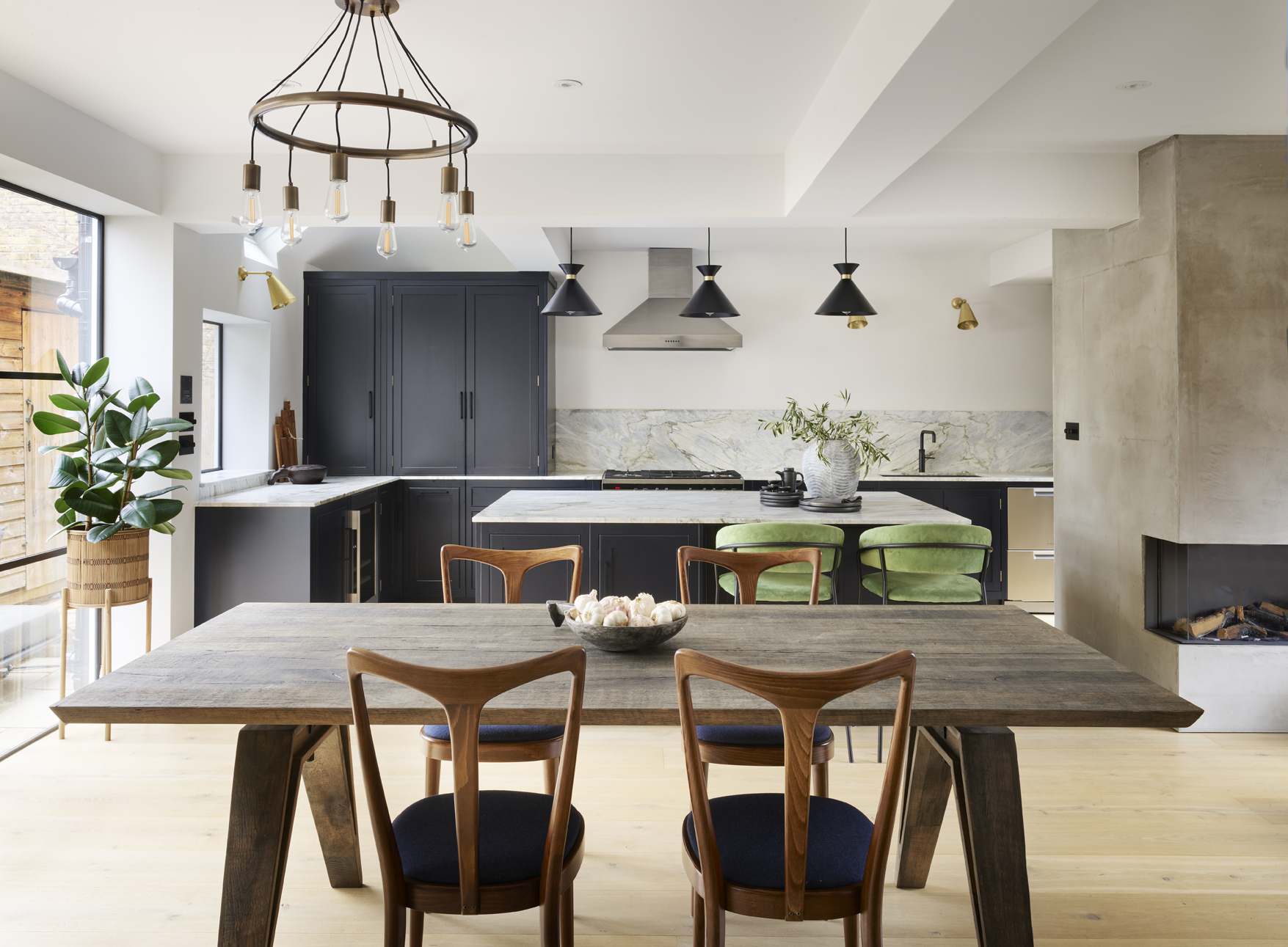
A stove or fireplace is also a good option for an open plan kitchen, where it can be used to supplement heat from another source and create a focal point across a living and dining space.
While it's unlikely to be used as the main source of heating for a space, stoves are more efficient than open fireplaces, and freestanding stove designs allow for more creative placement within a space, perfect for sitting in a corner, without hte need for a traditional fireplace surround. However, bear its need for ventilation in mind and how the stove plays a part in the larger scheme of your kitchen's design.
There are, again, choices of fuel available, including wood, gas, electricity and even bioethanol fireplaces that don't require ventilation. While the likes of gas and electric fires are easier to keep burning and offer greater control than log burning stoves, there's something undeniable about the real crackle of logs on a fire that shouldn't be overlooked.
If you are installing a new kitchen, find out how much does a new kitchen cost in 2025. If looking for ideas check 14 Wooden kitchen ideas and Shaker kitchen ideas for inspiration.
Get the Homebuilding & Renovating Newsletter
Bring your dream home to life with expert advice, how to guides and design inspiration. Sign up for our newsletter and get two free tickets to a Homebuilding & Renovating Show near you.
Hugh is editor of sister title Livingetc.com and former digital editor of homebuilding.co.uk. He has worked on a range of home, design and property magazines, including Grand Designs, Essential Kitchens, Bathrooms, Bedrooms and Good Homes. Hugh has developed a passion for modern architecture and green homes, and moonlights as an interior designer, having designed and managed projects ranging from single rooms to whole house renovations and large extensions. He's currently renovating his own Victorian terrace in Essex, DIYing as much of the work as possible. He's recently finished his kitchen renovation, which involved knocking through walls, and landscaping a courtyard garden, and is currently working on a bathroom renovation.
